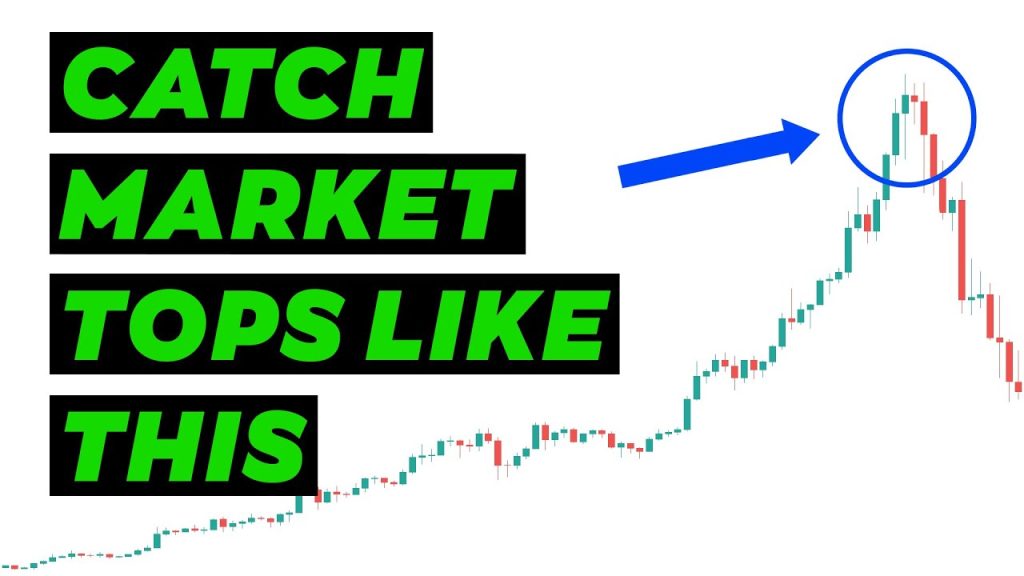Introduction: The Market as a Living Organism
The stock market has often been described as a living organism, constantly adapting to changes in global politics, technological innovation, investor psychology, and macroeconomic conditions. For centuries, it has served as both a mirror of the economy and a driver of capital allocation, channeling funds to companies capable of delivering growth and innovation.
Today, the stock market is not only a domestic affair but also a globalized ecosystem, where events in one region—such as U.S. Federal Reserve interest rate decisions, China’s manufacturing data, or energy shocks in the Middle East—can ripple across indices worldwide.
Understanding the stock market requires grasping not just the technicalities of charts and ratios but also the complex interplay between human behavior, institutional policies, and technological change. This article explores the evolution of equity markets, core principles of investing, common strategies, the psychological challenges investors face, and how future trends may redefine stock investing in the decades to come.
I. Historical Evolution of the Stock Market
1. Early Origins
- The Amsterdam Stock Exchange, established in 1602, is often credited as the world’s first organized stock market. It allowed investors to trade shares of the Dutch East India Company.
- In the 18th century, London’s Exchange Alley became the heart of British finance, giving rise to famous episodes such as the South Sea Bubble (1720).
- The New York Stock Exchange (NYSE), founded in 1792 under the Buttonwood Agreement, laid the foundation for America’s modern equity market.
2. 20th Century Transformation
- 1920s Boom and 1929 Crash: A period of speculation followed by the Great Depression reshaped the market, leading to regulatory reforms such as the U.S. Securities Act (1933) and the creation of the SEC (1934).
- Post-War Expansion: From the 1950s to the 1970s, economic growth and the rise of institutional investors brought stability and maturity to global markets.
- Late 20th Century Innovations: The introduction of mutual funds, electronic trading, and globalized capital flows democratized investing for retail participants.
3. The 21st Century: Technology and Volatility
- The dot-com bubble of the late 1990s showcased both the transformative potential and speculative risks of technology stocks.
- The 2008 Global Financial Crisis highlighted systemic vulnerabilities tied to financial derivatives and excessive leverage.
- Today, algorithmic trading, ETFs, and retail trading apps have reshaped how investors access and influence the market, contributing to increased liquidity but also sudden volatility.
II. Core Principles of Stock Market Investment
Despite its centuries-long evolution, successful investing still rests on a few fundamental principles.
1. Risk and Return
- The stock market typically offers higher long-term returns than bonds or cash, but at the cost of higher short-term volatility.
- Investors must assess their risk tolerance, investment horizon, and financial goals.
- Historical data (e.g., S&P 500 returns) shows equities outperform most asset classes over decades, rewarding patient investors.
2. Time in the Market vs. Timing the Market
- Legendary investor Peter Lynch famously noted: “Far more money has been lost by investors preparing for corrections than by the corrections themselves.”
- Consistently timing market tops and bottoms is nearly impossible. Long-term discipline often beats short-term speculation.
3. Diversification
- “Don’t put all your eggs in one basket.”
- By spreading investments across sectors, geographies, and asset classes, investors reduce the impact of any single market shock.
- Diversification has become easier thanks to index funds and ETFs.
4. Valuation Matters
- Even great companies can be poor investments at the wrong price.
- Tools like the Price-to-Earnings (P/E) ratio, Price-to-Book ratio, and Discounted Cash Flow (DCF) models help investors determine whether a stock is under- or overvalued.
III. Investment Strategies
Investors often fall into several broad categories, shaped by their objectives, time horizons, and philosophies.
1. Value Investing
- Popularized by Benjamin Graham and Warren Buffett, this strategy focuses on identifying undervalued companies whose intrinsic worth exceeds their market price.
- Emphasizes patience, fundamental analysis, and a margin of safety.
- Works best in less frothy markets where prices reflect investor fear rather than optimism.
2. Growth Investing
- Seeks companies with above-average revenue and earnings growth, often in tech, biotech, or emerging industries.
- Investors pay a premium for future potential, making them more vulnerable to shifts in sentiment and interest rates.
- Examples: Amazon, Tesla, and Nvidia during their high-growth phases.
3. Income Investing
- Focuses on dividend-paying stocks, aiming for steady cash flow rather than capital gains.
- Often attractive to retirees and conservative investors.
- Utilities, consumer staples, and REITs are common income-generating sectors.

4. Momentum and Technical Trading
- Relies on price trends, charts, and quantitative models rather than company fundamentals.
- Short-term and often higher-risk, but can be profitable in volatile markets.
- Increasingly driven by algorithmic trading and retail platforms.
5. ESG and Sustainable Investing
- Investors now consider environmental, social, and governance (ESG) metrics to align portfolios with ethical and climate-conscious goals.
- Companies with strong ESG profiles often demonstrate long-term resilience and risk management.
IV. Behavioral Finance: The Human Factor
Markets are driven as much by psychology as by economic fundamentals.
1. Fear and Greed Cycles
- Behavioral economist Robert Shiller highlighted how speculative bubbles often arise from herd behavior.
- The dot-com mania (1990s) and meme-stock surge (2021) show how emotion can override rational analysis.
2. Cognitive Biases
- Loss aversion: Investors fear losses more than they value equivalent gains, often leading to premature selling.
- Overconfidence: Overestimating one’s ability to time the market can lead to excessive risk-taking.
- Recency bias: Recent performance is often extrapolated into the future, ignoring historical cycles.
3. The Rise of Retail Investors
- Platforms like Robinhood, eToro, and Webull have lowered barriers to entry, attracting younger investors.
- Social media—Reddit’s WallStreetBets being a prime example—can create collective sentiment swings with market-moving power.
V. Globalization of Equity Markets
1. Emerging Markets
- Countries like India, Brazil, and Vietnam present opportunities for high-growth equity investment, but also carry political and currency risks.
- As supply chains diversify, regional markets become integral to global portfolios.
2. Interconnected Risks
- Cross-border capital flows mean financial crises can spread rapidly, as seen during the 1997 Asian Financial Crisis and 2008 Global Crisis.
- Investors must consider exchange rates, trade relations, and geopolitical tensions.
3. Tech Dominance and Concentration Risks
- The rise of mega-cap tech companies has increased index concentration, meaning the performance of markets like the S&P 500 often hinges on a handful of firms (e.g., the “Magnificent Seven”: Apple, Microsoft, Alphabet, Amazon, Nvidia, Meta, and Tesla).
VI. Technology and the Future of Stock Investing
1. Artificial Intelligence and Big Data
- AI-driven platforms analyze massive datasets to forecast price trends and optimize portfolios.
- Machine learning may level the playing field for retail investors but also risks amplifying herd behavior.
2. Blockchain and Tokenization
- The rise of tokenized equities could enable fractional ownership, reduce transaction costs, and expand access to global stocks.
- Regulatory clarity remains a hurdle.
3. Sustainable Finance
- Climate-related disclosures, carbon pricing, and green innovation will likely reshape the competitive landscape, rewarding companies aligned with a low-carbon economy.
VII. Risks in the Modern Era
1. Geopolitical Tensions
- Conflicts in Eastern Europe, the South China Sea, and the Middle East introduce new risks to global trade and energy prices.
2. Monetary Policy and Inflation
- Rising interest rates often hurt high-growth tech stocks, while value sectors (e.g., banking and commodities) may benefit.
- Investors must watch central bank policies closely.
3. Cybersecurity Threats
- Stock exchanges and brokerage platforms face growing risks from cyberattacks, which could trigger market disruptions.
4. Systemic Risks
- The dominance of a few large market-makers and reliance on complex derivatives may amplify future financial crises.
VIII. Building a Resilient Investment Portfolio
- Clarify Goals: Define time horizon and risk appetite.
- Diversify Wisely: Avoid overexposure to any single stock, sector, or geography.
- Adopt a Long-Term Mindset: Resist panic-selling during downturns.
- Stay Informed: Follow not only earnings reports but also geopolitical, technological, and macroeconomic trends.
- Embrace Responsible Investing: Consider ESG factors for long-term stability.
- Review Regularly: Rebalance portfolios to maintain intended asset allocation.
Conclusion: Thriving in a Complex Market
The stock market reflects both human ingenuity and human folly. It rewards those who think long-term, understand fundamentals, and respect risk.
In an era of rapid technological change, geopolitical uncertainty, and climate challenges, investors must balance optimism with prudence.
Successful investing in the stock market is less about predicting the next hot stock and more about discipline, diversification, and adaptability. By riding—not fighting—the market’s waves, modern investors can participate in the growth of the global economy while safeguarding their financial futures.

















































